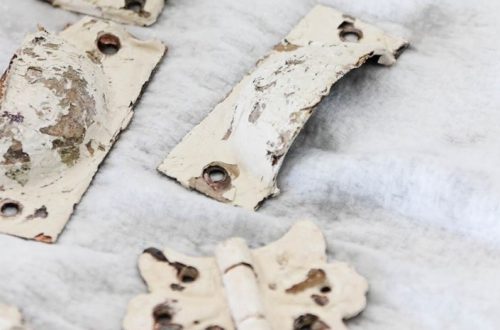Introduction
The swan neck flask experiment is an essential topic in laboratory settings, especially in chemistry and biology. This unique piece of glassware plays a critical role in various scientific experiments, particularly in distillation and fermentation processes. The design of the swan neck flask allows efficient gas exchange while preventing contamination, making it indispensable for researchers and educators alike.
Understanding the mechanics and applications of the swan neck flask is crucial for students, educators, and amateur chemists. This article will explore the components of the swan neck flask, its applications, and detailed instructions for setting up an experiment. We will highlight its advantages over traditional glassware, address safety considerations, and showcase real-world applications. By the end of this guide, you will have a thorough understanding of the swan neck flask and its significance in laboratory experiments.
What is a Swan Neck Flask?
A swan neck flask is a specialized type of laboratory glassware characterized by its distinctive curved neck, designed to facilitate efficient gas exchange. The design typically includes a bulbous body that holds liquids and a long, bent neck that extends upwards. This structure enables the flask to connect to other equipment, such as a condenser or a thermometer, while minimizing the risk of contamination.
Components of a Swan Neck Flask
1. Bulbous Body: The main section of the flask, where liquids are stored. Its shape allows for even heating and mixing of the contents.
2. Swan Neck: The elongated neck that curves downward, allowing gases to escape while preventing unwanted substances from entering. Its unique design also helps in maintaining a closed system for certain reactions.
3. Stopper: Often made from glass or rubber, the stopper is used to seal the neck. This seal ensures that no contaminants can enter the flask during an experiment.
4. Side Arm (Optional): Some swan neck flasks come with a side arm, allowing for additional connections to other equipment, such as gas outlets or liquid inflow tubes.
These components work together to create a closed environment for various chemical reactions or distillations, making the swan neck flask an invaluable tool in scientific research.

Applications of the Swan Neck Flask
The swan neck flask has numerous applications in laboratory experiments, primarily in the fields of chemistry, biology, and environmental science. Its versatile design makes it suitable for various scientific procedures.
1. Distillation
One of the primary applications of the swan neck flask is in distillation processes. Distillation involves separating mixtures based on differences in boiling points. The swan neck flask, when connected to a condenser, allows for efficient vaporization and condensation of the liquid. This setup is commonly used to purify liquids, such as separating alcohol from a fermentation mixture.
2. Fermentation
In microbiology, the swan neck flask is widely used for fermentation experiments. The curved neck allows gas evolution from the fermentation process while preventing dust and contaminants from entering the flask. This sealed environment is essential for cultivating microbial cultures effectively.
3. Chemical Reactions
The swan neck flask is ideal for carrying out various chemical reactions that require controlled conditions. Its design allows researchers to monitor and manipulate variables without exposing the reaction to the external environment.
4. Saponification
Saponification is the chemical reaction that produces soap. Using a swan neck flask in this process enables chemists to mix fats or oils with an alkali solution while controlling temperature and exposure to the environment.
By understanding these applications, students and researchers can appreciate the significance of the swan neck flask in scientific practices.
Setting Up a Swan Neck Flask Experiment
Setting up a swan neck flask experiment requires specific materials and step-by-step procedures to ensure accurate results. Here’s a detailed guide for creating a successful experiment using a swan neck flask.
Materials Needed
1. Swan Neck Flask: Choose an appropriate size based on the volume of liquid you intend to use.
2. Heat Source: A hot plate or Bunsen burner to provide consistent heat.
3. Thermometer: To monitor the temperature of the liquid in the flask.
4. Condenser: For distillation purposes, if applicable.
5. Stopper: To seal the flask.
6. Liquid Sample: The material you intend to study or distill.
Step-by-Step Procedure
1. Preparation: Clean the swan neck flask thoroughly to remove any residues from previous experiments. Dry it completely.
2. Fill the Flask: Measure the appropriate volume of your liquid sample and pour it into the bulbous body of the swan neck flask. Avoid overfilling to prevent spillage during boiling.
3. Insert Stopper: Securely place the stopper in the neck of the flask to create a sealed environment.
4. Connect the Condenser: If you are performing distillation, connect one end of the swan neck flask to a condenser. Ensure the other end of the condenser is connected to a receiving flask to collect the distillate.
5. Insert the Thermometer: Place the thermometer in the neck of the flask to monitor the temperature accurately.
6. Begin Heating: Slowly turn on the heat source. Apply gradual heat to ensure controlled boiling and minimize the risk of splattering.
7. Monitor Results: Continuously observe the temperature and changes in the flask. Maintain notes for analysis after the experiment.
By following these steps, you will set up a swan neck flask experiment effectively, ensuring accurate and reliable results.

Advantages of Using a Swan Neck Flask
The swan neck flask presents several advantages compared to traditional glassware. Understanding these benefits can help researchers and students appreciate its importance in laboratory settings.
1. Reduced Contamination Risk
The design of the swan neck flask minimizes the risk of contamination. The curved neck prevents airborne particles from entering while allowing gases to escape. This feature is particularly crucial in microbiology and fermentation experiments.
2. Efficient Gas Exchange
The swan neck allows for efficient gas exchange in processes like fermentation. Microbial cultures can produce gases without disrupting the integrity of the setup, promoting a healthy growth environment.
3. Better Control Over Reactions
Using a swan neck flask provides better control over laboratory reactions. The setup allows scientists to regulate temperature and pressure, essential factors in achieving accurate results.
4. Versatility in Applications
The swan neck flask is versatile and can accommodate various experimental applications, including distillation, fermentation, and chemical reactions. This adaptability makes it a fundamental tool in many scientific laboratories.
5. Ease of Setup
Setting up a swan neck flask experiment is generally straightforward. The simple design allows for a quick and effective experiment configuration, saving time for researchers.
These advantages make the swan neck flask a preferred choice among laboratory technicians and educators.

Safety Considerations
When conducting experiments with a swan neck flask, safety should always be a top priority. Adhere to the following safety guidelines and best practices to ensure a safe working environment.
1. Personal Protective Equipment (PPE)
Always wear appropriate PPE, including goggles, gloves, and lab coats, when working with chemicals or heated materials. This protects against splashes, burns, and exposure to hazardous substances.
2. Proper Ventilation
Ensure that your work area is well-ventilated, especially when heating liquids that may release harmful fumes. Utilize a fume hood if available to minimize exposure to toxic gases.
3. Careful Handling of Glassware
Glassware can break easily. Handle the swan neck flask with care and avoid applying excessive pressure. Always inspect glassware for cracks or defects before using it.
4. Heat Management
Monitor the heat source closely to prevent overheating, which can lead to accidents or breakdown of materials. Use a heat-resistant mat to protect surfaces from burns.
5. Emergency Preparedness
Be prepared for emergencies by keeping a first-aid kit and fire extinguisher accessible in the laboratory. Familiarize yourself with escape routes and emergency procedures specific to your facility.
By following these safety considerations, you can conduct experiments with a swan neck flask safely and effectively.
Real-World Applications and Experiments
The swan neck flask experiment has significant real-world applications across various scientific fields. Here are some notable experiments and uses that highlight its importance:
1. Alcohol Distillation
In the production of alcoholic beverages, swan neck flasks play a vital role in distilling spirits. By accurately separating alcohol from water and impurities through distillation, brewers can produce high-quality beverages.
2. Research in Microbiology
Microbiologists use swan neck flasks in controlled experiments to understand fermentation processes. These experiments can contribute to advances in food science, biofuel production, and pharmaceutical developments.
3. Isolation of Essential Oils
In essential oil extraction, swan neck flasks are utilized during steam distillation. This method allows for pure extraction of volatile compounds while safeguarding the quality of the oil.
4. Chemical Synthesis
Chemists implement the swan neck flask in various synthesis experiments. Its design enables precise control over reactions, facilitating the discovery and development of new compounds.
5. Education and Demonstrations
In educational settings, instructors often use swan neck flasks to demonstrate fundamental concepts in chemistry and biology. Through hands-on experiments, students can visualize complex ideas and processes.
These real-world applications illustrate the versatility and significance of the swan neck flask in scientific research and education.

Conclusion
The swan neck flask experiment is a cornerstone of laboratory practices, playing an essential role in various scientific applications. Its unique design offers superior benefits, including reduced contamination risks, efficient gas exchange, and versatility in experimental setups. Understanding how to use a swan neck flask effectively can enhance research quality and student learning experiences.
By adhering to proper safety measures and utilizing this valuable tool, researchers and educators can unlock new findings and foster creativity in the lab. As you explore the fascinating world of chemistry and biology, consider the swan neck flask to expand your experimental capabilities. Embrace the opportunity to engage with scientific concepts hands-on, and let the swan neck flask be a gateway to exploration and discovery!





